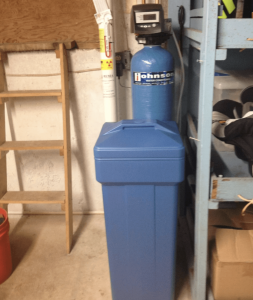Eradicating Limescale Buildup with a Water Softener: Insights from a Pentair Water Softening Company in Winfield, Illinois
 If you look closely at your metal sinks, faucets, and shower heads, you might notice a white powdery substance. This is known as limescale buildup, and it is the result of the presence of hard water.
If you look closely at your metal sinks, faucets, and shower heads, you might notice a white powdery substance. This is known as limescale buildup, and it is the result of the presence of hard water.
Fortunately, there’s a way to eradicate limescale buildup for good: you can have a water softener installed in your home. Are you interested in learning how a water softener can help with your limescale problem? This Pentair water softening company in Winfield, Illinois is going to explain below.
What Causes Limescale Buildup?
We’ve mentioned what limescale buildup looks like: a small layer of white powder. Now, let’s discuss what causes it. The simple answer is hard water. However, that doesn’t quite explain it. More specifically, it’s the calcium and magnesium particles that exist within hard water.
When hard water evaporates, it leaves calcium and magnesium particles behind. Over time, these particles build up, becoming more noticeable. In general, they’re easiest to notice on metal entities, like sinks and faucets.
One thing to note here is that limescale buildup is not harmful in any way. It does not, for instance, contaminate food or drinks. However, it’s unsightly to look at, and it can greatly reduce the aesthetic of a given room.
You could just periodically clean the limescale off your water-based entities. However, that requires a lot more work than the alternative: having a system installed by a Pentair water softening company in Winfield, Illinois.
How the Water Softener Can Do Away with Limescale Buildup
We’ve discussed what causes limescale buildup. Now, let’s discuss how the water softener can do away with limescale buildup for good.
The water softener’s purpose is to remove calcium and magnesium particles from water. Limescale buildup is essentially just a buildup of calcium and magnesium particles. Therefore, if the water softener removes all the calcium and magnesium from a water supply, it will effectively eradicate any possibility of limescale buildup.
How does the water softener go about removing calcium and magnesium particles from hard water? It utilizes a process called ion exchange. This is when positively charged ions are traded for negatively charged ions. More specifically, sodium ions are traded for calcium and magnesium ions.
Water softeners do this with the use of resin beads. These sit within the water softener’s water tank, and they hold on to sodium ions. Then, when calcium and magnesium particles pass through in the form of hard water, the sodium ions leave the resin beads, thereby opening space for the calcium and magnesium ions to cling.
This makes it so that, when the water finally leaves the water softener, it’s void of calcium and magnesium, and contains only a small amount of sodium. The sodium content is small enough so as not to affect the water’s quality.
All you’ll have to do to keep a water softener running is to provide it with softener salt every month or two. Assuming you do this regularly, you’ll never have to worry about limescale buildup ever again. If you need help with this task, you can always reach out to a Pentair water softening company in Winfield, Illinois.
Looking for a Pentair Water Softening Company in Winfield, Illinois?
Are you interested in having a water softener installed in your home? Looking to partner with the most trusted Pentair water softening company in Winfield, Illinois? If so, Johnson Water Conditioning is the company to call.
With the help of our skilled and experienced team, you’ll never have to look at limescale buildup in your house ever again. Contact us today to learn more about our process.

 Better Water for
a Better Life
Better Water for
a Better Life
